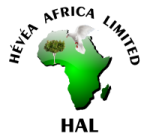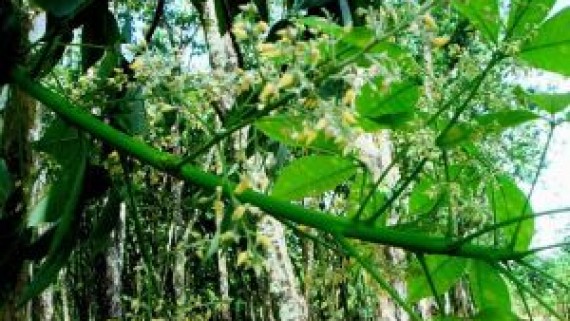Facts About Rubber Tree
Hevea brasiliensis (Rubbertree)
Scientific name
Hevea brasiliensis (Willd. ex Juss.) Muell. Arg.
Synonyms
Siphonia brasiliensis Willd. ex. A. Juss.
Common names
Rubbertree, hevea, natural rubber, para rubber
Family
Euphorbiaceae
Origin
Hevea brasiliensis is native to the Amazon region; Brazil, Venezuela, Ecuador, Colombia, Peru, and Bolivia.
Naturalised distribution (global)
Hevea brasiliensis has been introduced to many parts of the tropics for rubber production. Locations within which H. brasiliensis is naturalised include eastern Africa and some oceanic islands with warm climates.
Introduced, naturalised or invasive in East Africa
In East Africa, Hevea brasiliensis has been recorded in Central and southern Uganda and North eastern (coastal) parts of Tanzania. It is invasive in parts of Tanzania (Tropical Biology Association 2010). The editors are not aware of records of this species from Kenya but it is likely to be present in the country.
Habitat
Hevea brasiliensis occurs in forest edges and gaps.
Description
Hevea brasiliensis can be distinguished from its deciduous habit, typically 30-40 m tall with a leafy crown.
The trunk is cylindrical, unbranched up a long way and then with much-branched leafy canopy, but frequently swollen towards the base. The bark is pale to dark brown with a smooth surface and the inner bark pale brown with abundant white or cream coloured latex.
The leaves are in spirals and with three leaflets. the leaf stalk (petioles) measure 7.5-10(-70) cm long; leaflets obovate (egg-shaped in outline but with the narrower end at the base), apically acuminate, entire, basally acute, penninerved, 10-15(-50) cm long, 3-6(-15) cm broad, elliptic-lanceolate in outline.
The flowers are small with no petals, bright or cream-yellow in colour and extremely pungent. They are either male or female but both are found in the same inflorescence (monoecious). Female flowers are apical, the more numerous male flowers lateral in the inflorescence.
The fruit is an exploding 3-lobed, 3-seeded ellipsoidal capsule. Fruits burst open when ripe and the seeds are scattered up to 15 m from tree. Seeds are variable in size, 2.5-3 cm long, mottled brown, lustrous.
Reproduction and dispersal
Propagated by seeds which are released explosively up to 15 m from the parent plant.
Economic and other uses
Rubber is obtained by tapping the trunks of the trees. Cured rubber is used for all types of rubber products. Seeds are source of Para Rubber seed oil, recommended for manufacture of soap. Although poisonous, seeds can be eaten as a famine food after processing. Boiling removes the poison and releases the oil which can be utilised for illumination. Seeds are sometimes eaten off the ground by cattle. Kernels contain oil, used in soap making, paints, varnishes, and is effective against houseflies and lice.
Environmental and other impacts
Hevea brasiliensis can escape from cultivation and colonise forest edges and gaps. Proteins present in natural rubber latex may cause allergic reactions.
Management
The precise management measures adopted for any plant invasion will depend upon factors such as the terrain, the cost and availability of labour, the severity of the infestation and the presence of other invasive species. Some components of an integrated management approach are introduced below.
The best form of invasive species management is prevention. If prevention is no longer possible, it is best to treat the weed infestations when they are small to prevent them from establishing (early detection and rapid response). Controlling the weed before it seeds will reduce future problems. Control is generally best applied to the least infested areas before dense infestations are tackled. Consistent follow-up work is required for sustainable management.
Seedlings can be sprayed with a suitable herbicide and saplings and trees basal bark treated. When using any herbicide always read the label first and follow all instructions and safety requirements. If in doubt consult an expert.
The editors are not aware of a biological control programme for this species. Any biological control programme for a species such as this which is grown on a large scale is likely to engender conflicts of interest.
Legislation
Not listed as a noxious weed by the state or governments in Kenya, Tanzania and Uganda


Comments
No comment yet.